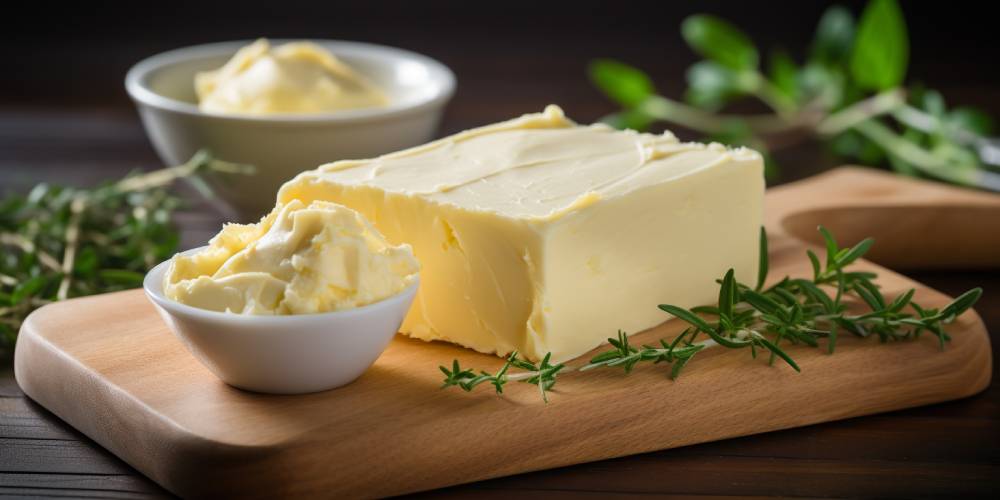
In a world where conscious consumption is not just trendy but essential, our culinary choices are evolving rapidly. Among the myriad of dairy substitutes now available, one that stands out both for its versatility and its close mimicry to the real thing is vegan butter. This luscious, plant-based alternative has been a game-changer for vegans, lactose-intolerant individuals, and eco-conscious foodies alike.
Dive with me into the captivating world of vegan butter, where we’ll unravel its scientific backbone, demystify its role in baking, and even embark on a DIY journey to create your own creamy concoctions. Whether you’re a seasoned vegan chef or simply curious about sustainable alternatives, this guide promises to churn your perspective on butter.
The Science Behind Vegan Butter
Ah, the creamy allure of butter! For centuries, butter has held a cherished place in our kitchens. But what if I told you there’s an alternative that’s just as tasty and much kinder to our planet? Enter vegan butter. Let’s take a deep dive into the science behind this dairy-free marvel.
What Makes Vegan Butter, Butter?
Most traditional butter is a combination of milk fats and water. Vegan butter, however, dances to a different tune. The main players here are plant-based fats like coconut oil, palm oil, or soybean oil. Just like dairy butter, these fats solidify at cooler temperatures and melt when heated. This is crucial for giving vegan butter that familiar consistency.
Moreover, vegan butter often contains added ingredients like lecithin, which acts as an emulsifier. Ever wonder why vegan butter is so smooth and doesn’t separate into layers? You can tip your hat to emulsifiers for that silky texture. They ensure the mix of water and fats stays homogenous. Meanwhile, apple cider vinegar or lemon juice might be thrown into the mix to provide that tangy kick reminiscent of cultured dairy butter.
Environmental Impact
Additionally, there’s a green side to this story. Opting for vegan butter reduces the demand for dairy farming, which we know contributes to greenhouse gas emissions. So, every time you spread some vegan goodness on your toast, think of it as a small step towards a more sustainable planet.
Tips and Tricks for Baking with Vegan Butter
Venturing into the realm of vegan baking? I’ve got your back! Vegan butter can be an incredible substitute in baking, but knowing a few tricks will ensure your baked goods turn out divine every single time.
Consistency Matters
First and foremost, pay attention to consistency. If a recipe calls for softened butter, make sure your vegan variant is at room temperature. Likewise, melted means melted, whether it’s from a cow or a coconut.
Choose Wisely
When selecting a vegan butter for baking, take a peek at the ingredient list. Those with a higher water content can alter the outcome of your baked goods. Generally, brands that market specifically for baking have reduced water content, ensuring your cookies and cakes have the best texture.
Flavor is Key
Some vegan butters have distinct flavors due to the oils used. For example, a coconut-based butter might add a subtle tropical taste to your treats. If you’re baking something where a neutral flavor is desired, opt for butters made with oils that have less pronounced tastes.
DIY Vegan Butter Recipes
Feeling crafty? Making vegan butter at home is a piece of cake (or, should I say, a pat of butter?). Here are two of my favorite DIY vegan butter recipes:
Simple Soy-based Butter:
Ingredients:
- 1 cup refined coconut oil (melted)
- 1/4 cup soy milk (unsweetened)
- 1 tsp apple cider vinegar
- 1/4 tsp salt
- 2 tsp soy lecithin
Instructions:
- Mix soy milk and apple cider vinegar in a bowl. Let it sit for a few minutes. This creates a buttermilk-like base.
- Pour the mixture into a blender, adding the melted coconut oil, salt, and soy lecithin.
- Blend until smooth and creamy.
- Pour into molds or containers and refrigerate until solid.
Nutty Almond Butter:
Ingredients:
- 1 cup refined coconut oil (melted)
- 1/4 cup almond milk (unsweetened)
- 1 tsp lemon juice
- 1/4 tsp salt
- 2 tsp sunflower lecithin
Instructions:
- In a bowl, combine almond milk and lemon juice. Let it rest for a moment.
- Into a blender, add the almond milk mixture, melted coconut oil, salt, and sunflower lecithin.
- Blend until you achieve a velvety consistency.
- Transfer to molds or a container and chill until it firms up.
Remember, whether you’re baking a storm, frying, or just spreading on toast, vegan butter is an adaptable, delicious, and environmentally-friendly alternative. Enjoy every bite and spread the vegan love!
